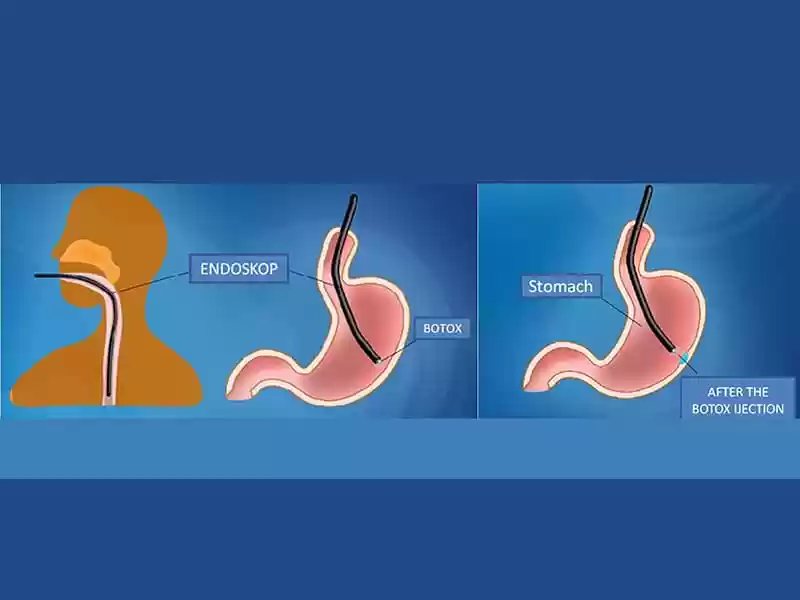What is Laparoscopic Surgery?
Laparoscopic surgery, also popularly known as closed surgery, is a surgical method that allows the patient to recover more quickly and feel much less pain than open surgery. In laparoscopic surgery, which is used for the diagnosis or treatment of various diseases that develop in the abdominal region, the size of the incision on the skin is very small.
Laparoscopic surgery takes its name from the laparoscope used during the surgical procedure. A laparoscope is defined as a fiber optic telescope with a light at the end. Thanks to the laparoscope, which is inserted into the body through the incision made in the abdomen, the physician gets a comfortable view during the operation.
Through incisions in different parts of the abdomen, other surgical instruments are inserted into the operation area and the surgeon performs his/her movements by watching them on a high-resolution monitor. Laparoscopic surgery, also known asminimally invasive surgery or bloodless surgery, can diagnose and treat many different diseases.
Why is Laparoscopic Surgery Performed?
Laparoscopic surgery is a way to diagnose and treat many diseases. The most common operations performed laparoscopically are gallbladder surgery, cyst surgery, appendectomy (removal of appendicitis), myomectomy (removal of fibroids), hysterectomy (removal of the uterus), tubal ligation (ligation of the fallopian tubes) and endometriosis (chocolate cyst) surgery. Laparoscopic surgery, which allows the treatment of health problems related to internal organs with surgical intervention, is often used by gynecology, gastroenterology, urology and general surgery physicians.
Some of the many conditions for which laparoscopic surgery is used for diagnosis and treatment can be listed as follows: Investigation of abdominal or groin pain, Diagnosis of pelvic inflammatory disease (PID), Diagnosis of menstrual bleeding accompanied by excessive pain and bleeding, Diagnosis of ovarian cysts, Removal of ovaries, fallopian tubes or uterus for various reasons, Investigation of causes of infertility, Treatment of ectopic pregnancy, Diagnosis and treatment of diseases related to appendicitis, Treatment of cysts in the abdominal region, Removal of tumors in the abdominal region, Removal of the gallbladder, Treatment of diseases requiring incision of the intestines, Diagnosis and treatment of scrotal orchiopexy (undescended testicle), Treatment of stomach ulcers, Obesity surgery, Treatment of hernias in the abdomen and groin area, Partial or complete removal of organs such as prostate, liver, colon, kidney and bladder.
How is Laparoscopic Surgery Performed?
As with other types of surgery, the patient is put to sleep with general anesthesia before the interventions to be performed with laparoscopic surgery. The operation starts with an incision made in the lower abdomen. Carbon dioxide gas is first introduced through the incision so that the physician can easily see the area to be intervened on the monitor. The odorless and colorless carbon dioxide gas, which is injected into the abdomen with a Veress needle, causes the patient's abdomen to swell. Thus, the inner region of the abdomen expands and the area to be intervened can be seen easily.
After the abdomen is inflated with carbon dioxide gas, some of which is absorbed and excreted by the body after the operation, the veress needle is removed and the trocar tube is inserted. A laparoscope is passed through the trocar tube and the affected area can be observed on the monitor. Depending on the area to be operated on, 2 or 3 more incisions with a diameter of 0.5 to 1 cm are made and trocar tubes are inserted into these areas. Through these tubes, special instruments to be used during laparoscopic surgery are inserted into the abdomen. After the surgical procedure is completed, all instruments and trocar tubes are withdrawn. Carbon dioxide gas is discharged and the operation is completed by suturing the incision sites. In diagnostic laparoscopy, the same procedures are repeated. In some cases, only the insertion of an optical imager is sufficient for diagnosis, while in others laparoscopic instruments may be used.
Laparoscopic Surgery Methods
Laparoscopic surgery is more invasive than open surgery. It can be used to treat many diseases. A thin, flexible tube called a laparoscope is placed inside the body. This instrument is suitable for viewing the inside of the body. It is also known as closed surgery and causes less pain because small incisions are made. It allows patients to recover faster. Blood loss is less and leaves small scars.
Which diseases can laparoscopic surgery treat?
Laparoscopic surgery can be used to treat many diseases and medical conditions.
Gallbladder Diseases: Laparoscopic cholecystectomy is a commonly used procedure to treat gallstone disease.
Appendicitis: Laparoscopic appendectomy can be performed if the appendix becomes inflamed.
Inguinal Hernia: Laparoscopic methods can be used to repair hernias in the groin area.
Colorectal Diseases: Surgical treatment of colorectal diseases such as colon or rectal cancer, diverticulitis, ulcerative colitis and Crohn's disease can be performed laparoscopically.
Gynecologic Diseases: Laparoscopy is frequently used in the treatment of gynecological problems such as endometriosis, fibroids, ovarian cysts and hysterectomies.
Urological Diseases: Some urological diseases such as prostate cancer, kidney tumors, bladder cancer and kidney stones can be treated with laparoscopic surgery.
Stomach and Esophageal Diseases: Reflux disease, stomach tumors and esophageal surgery can be treated laparoscopically.
Liver and Pancreas Diseases: There are laparoscopic surgery options for liver and pancreatic diseases such as liver tumors, gallstone complications and pancreatic cysts.
Thoracic Surgery: Laparoscopic thoracoscopy can be used to remove lesions or cysts in the chest wall.
Gastric Surgery: Laparoscopic stomach surgeries are used specifically to treat obesity.
How Long Does Laparoscopic Surgery Take?
The duration of laparoscopic surgery can vary depending on many factors. There are factors such as the type of surgery, the surgeon's experience, the patient's condition, the complexity of the procedure, complications, hospital conditions and equipment. The duration also varies according to the type of disease and the planning of the operation. Simple operations take a shorter time, the more complex the operation, the longer it may take. Obesity surgery may be a longer procedure, while removing stones from the gallbladder is an easier operation and may take less time. Laparoscopic surgery takes less time than open surgery.
Who Can Have Laparoscopy Surgery?
Laparoscopy surgery is a method that can be applied in the treatment of many diseases. It can be used in the diagnosis and treatment of diseases in organs such as appendicitis, gall bladder, liver, pancreas and stomach. It is mostly used in abdominal disorders. Reflux surgeries, gallstones, inguinal hernia, large intestine tumors are the most common diseases.
Advanced cancers require more extensive treatments instead of laparoscopic treatment. Severe heart patients may also not be suitable. Operations should be performed by an experienced team and surgeon.
What are the Advantages of Laparoscopic Surgery?
One of the biggest advantages of laparoscopic surgery is that the incision area is small. This allows the patient to recover quickly after the operation and the amount of intra-abdominal adhesions is less compared to open surgeries. Thanks to laparoscopic surgery, the patient feels less pain and soreness after laparoscopic surgery and uses less pain medication during the recovery process.
After laparoscopic surgery, the person is discharged in a short time and returns to his/her daily life faster. The incision size is small enough not to cause aesthetic problems. The existing incision scars become almost invisible within a few years. The risk of developing a hernia after the operation is low. Another important advantage of laparoscopic surgery is that complications such as bleeding and infection are less than open surgeries.
What is the Recovery Process After Laparoscopic Surgery?
After laparoscopic surgery, the person is taken out of the operating room and taken under observation. After the person regains full consciousness, he/she is brought to the patient room. The effect of the anesthesia continues for a while. During this time, the patient may complain of nausea due to the anesthesia and mild pain in the incision area.
Depending on the type of intervention performed with laparoscopic surgery, the time for the patient to stand up varies, but most of the time the patient can stand up and eat a light meal within 3-4 hours. Depending on the carbon dioxide gas given to the patient during the operation, the person may feel shoulder pain for 24 hours. Depending on the type of operation, the person is usually discharged and sent home on the same day or the next day.
Laparoscopic Surgery Prices
Laparoscopic surgery prices may vary depending on the hospital where the procedure will be performed, the surgeon's experience, the patient's condition and the surgery to be performed. Laparoscopy devices include higher quality equipment compared to normal surgeries, so the price scale may be high. You can contact us to get information about laparoscopic surgery prices.








